MENU


Montana has 55 State Parks where you can enjoy camping, hiking, fishing, swimming, boating and more while discovering some of the greatest natural and cultural treasures on earth.
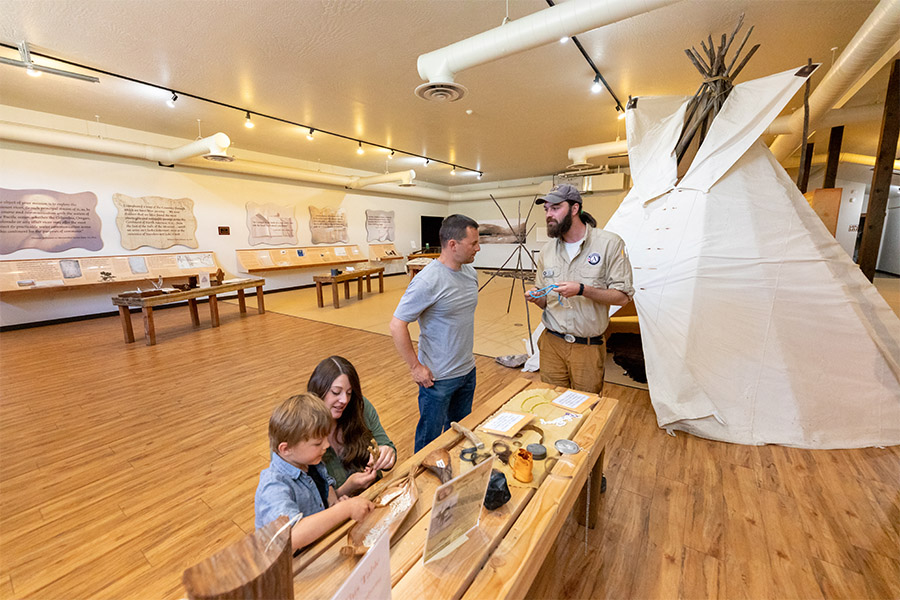
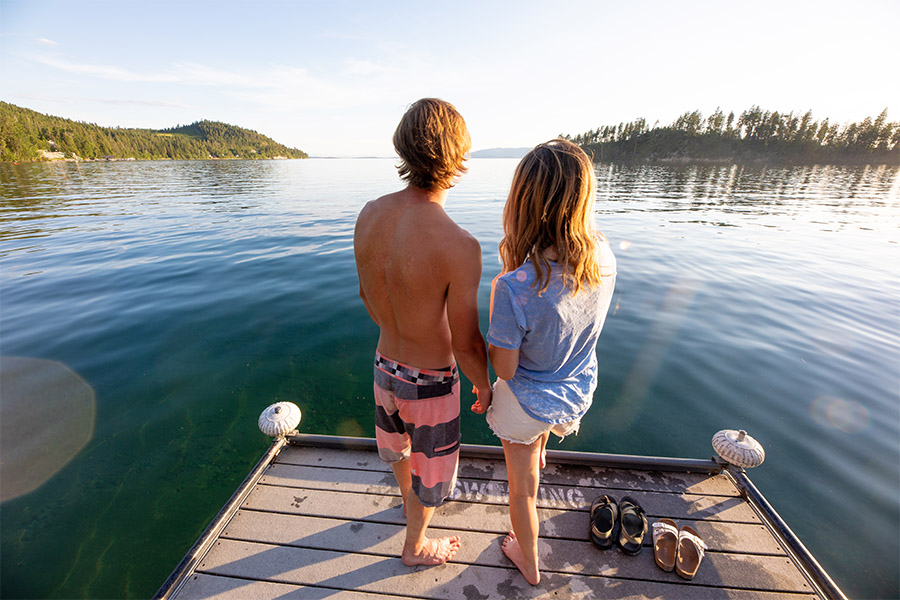
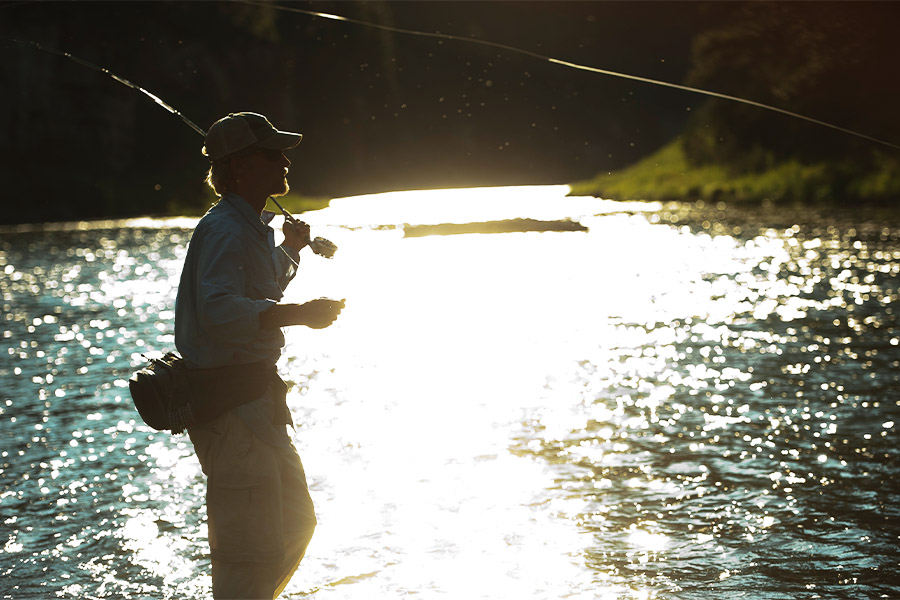
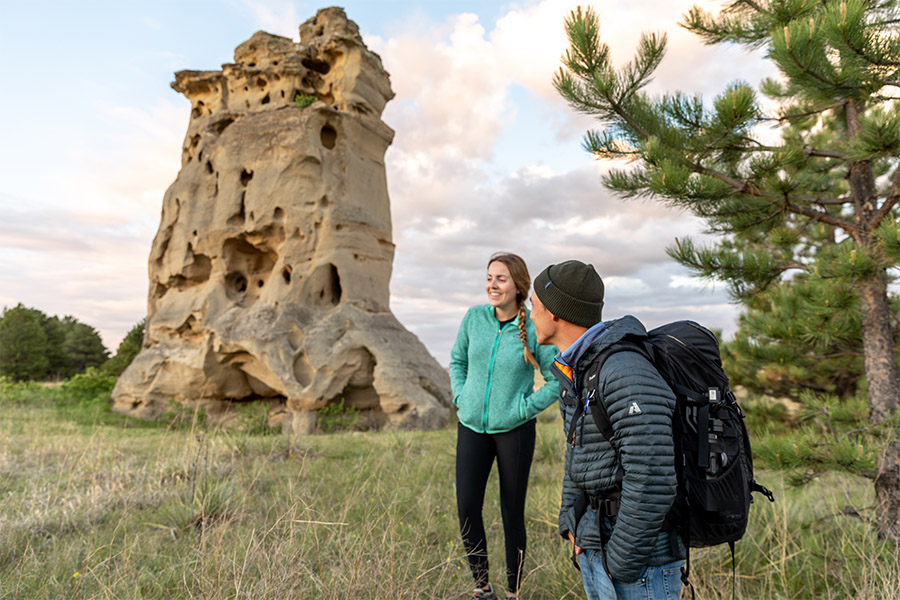

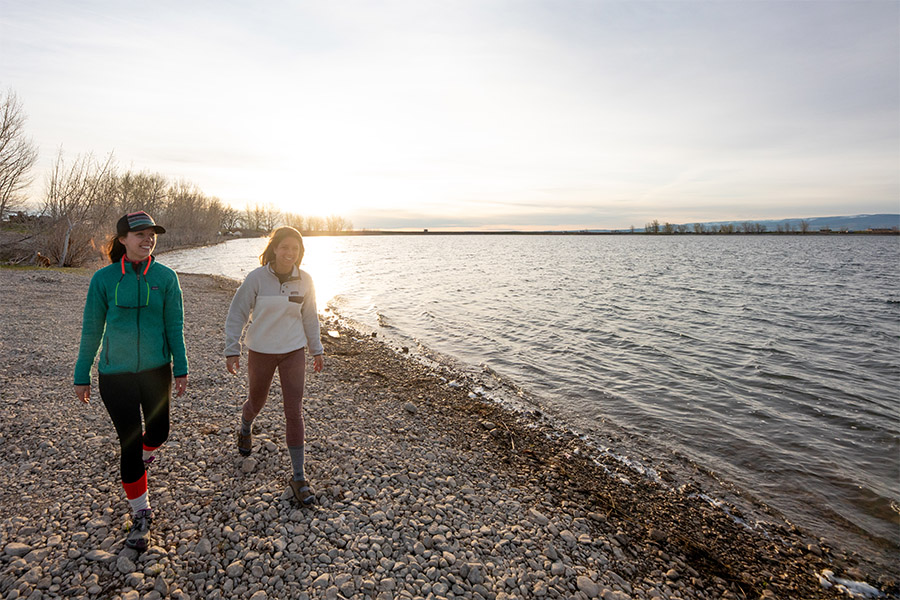

Our Mission is to preserve and protect our state’s cultural, natural, and recreational heritage for the benefit of our families, communities, and local economies. Our objectives are to provide excellent land stewardship, public safety, and service through recreation, innovation, and education. Our goals are to provide an extraordinary experience for our visitors and to keep our state park system strong now and for generations to come.
The development of the state parks system in Montana was characteristic of many western states responding to the nationwide call for parks that began in the 1920s.
Advocates of state parks in Montana took early direction from the National Park Service and the National Conference on State Parks, which began in 1921. The beginnings and development of the Montana State Park system trace no straight easy routes. In its first years, it had only a director and possibilities.
Today we are a thriving 54 state park system with sites on Flathead Lake and sites significant to Montana history and statehood, to parks rich in Native-American culture and heritage.
1936 - The State Land Board accepts a land donation from the Northern Pacific Railroad and passes a resolution establishing Morrison Cave (also referred to as Lewis and Clark Caverns) establishing Montana's first state park.
1939 - Legislature establishes a State Park System and Commission.
1941 - Lone Pine becomes a state park.
1953 - State parks program transferred to the State Highway Commission. State Parks Commission abolished.
1953 - Makoshika becomes a state park and today remains the largest park in our 54 state park system.
1954 - Bannack becomes a state park.
1960 - Smith River becomes a state park.
1961 - Chief Plenty Coups State Park established.
1965 - State Parks are transferred to the Fish and Game Commission.
1969 - State Parks administer camping fees.
1970 - Cooney becomes a state park.
1979 - Department name change from "Fish and Game" to "Fish, Wildlife and Parks."
1987 - Legislature ends general fund allocations to the Parks Division.
1989 - Vehicle entrance fee established.
1994 - State Parks division’s programs for the public were showing success beyond expectations. 26 parks were hosting annual special events, volunteers were plentiful, and the division was benefiting from public support.
2001 - Travelers' Rest becomes a state park.This park is steeped in Native-American and Lewis & Clark history.
2004 - Annual Vehicle Registration fee established, eliminating entrance fee for residents.
2010 - Economic Impact Survey shows that Montana State Parks had nearly 2 million visitors that year, generating $289 million dollars for local economies with visitors spending money in tourism industry related areas such as grocery stores, gas stations, restaurants, hotels, retail, and more. This created the demand for 1,600 tourism industry related jobs in Montana.
2013 - Legislature establishes the Montana State Parks & Recreation Board.
2014 - Montana State Parks celebrates its 75th anniversary.
Since 2004, when Montanans register their vehicles, this support is the largest source of funding for Montana's 55 State Parks.
This support means no daily entrance fees for residents when you visit our State Parks.
Your support helps our parks with maintenance and operations.
For just $9, it costs less than one movie ticket or a couple of fancy cups of coffee to have fun, make memories, and support Montana's natural, cultural, and recreation heritage now and for generations to come.
Funds are used for maintenance and operational costs at these state-owned facilities and for trail grants:
$6.74 Montana's 55 State Parks
$0.50 Montana's 336 Fishing Access Sites
$0.39 Virginia City and Nevada City Heritage Sites
$1.37 Community Recreation Trail Grants
Since nonresidents do not contribute to Montana's park system through the vehicle registration fee, they pay a $8 daily entrance fee per vehicle at a Montana State Park.
Out-of-state visitors can purchase a Nonresident Entrance Pass, which allows for an unlimited number of visits and discounted camping rates at one low price of $50.
Purchase a Nonresident Entrance Pass online at the FWP License Service.
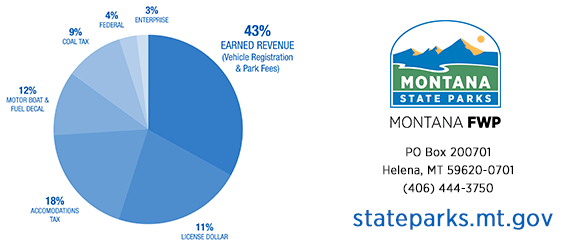
The Montana State Parks Classification and Investment Strategy Policy guides strategic investment of resources into the park system.
The policy supports the Montana State Parks Strategic Plan, adopted in 2015, and addresses key recommendations from the 2018 Parks Division Legislative Audit and the governor-appointed Parks In Focus (PIF) Commission. The audit identified a need for regularly ranking and reviewing resources for investment in capital projects, maintenance, and state park operations. Similarly, the PIF Commission recommended revision of the existing classification policy to help Parks strengthen its investment strategy and focus on fostering critical partnerships for the state park system.
The Classification and Investment Strategy satisfies both recommendations by providing the Parks Division with a framework for the investment of human and fiscal resources across the park system in alignment with visitor needs and expectations while resolving significant major maintenance and capital improvement issues that represent public health and safety risks.
The Montana State Parks & Recreation Board is a citizen-led board appointed by the governor that consists of five members, one member from each district in the state.
Reserve America
Phone:1 (855) 922-6768
Website: montanastateparks.reserveamerica.com
Montana State Parks Headquarters
Montana Fish, Wildlife & Parks
1420 East Sixth Avenue
P.O. Box 200701
Helena, MT 59620-0701
Phone:(406) 444-3750
Fax:(406) 444-4952
Email: fwpprk@mt.gov
Media Contact
Patrick Doyle
Marketing and Communications Manager
Montana State Parks
1420 East Sixth Avenue
P.O. Box 200701
Helena, MT 59620-0701
Office:(406) 444-3818
Cell:(406) 422-9809
Email: pdoyle@mt.gov
Northwest Montana (Region 1)
490 North Meridian Road
Kalispell, MT 59901
David Landstrom
Regional Park Manager
Phone: (406) 571-4574
Fax: (406) 257-0349
Email: dlandstrom@mt.gov
West Central (Region 2)
3201 Spurgin Road
Missoula, MT 59804
Loren Flynn
Regional Park Manager
Phone: (406) 542-5500
Fax: (406) 542-5517
Email: lflynn2@mt.gov
Southwest (Region 3)
1400 South 19th Avenue
Bozeman, MT 59718
Betsey LaBroad
Regional Park Manager
Phone: (406) 994-3552
Fax: (406) 994-4042
Email: Betsey.LaBroad@mt.gov
North Central (Region 4)
4600 Giant Springs Road
Great Falls, MT 59405
John Taillie
Regional Park Manager
Phone: (406) 454-5859
Fax: (406) 761-8477
Email: jtaillie@mt.gov
South Central (Region 5)
2300 Lake Elmo Drive
Billings, MT 59105
Terri Walters
Regional Park Manager
Phone: (406) 247-2940
Email: twalters@mt.gov
Eastern (Regions 6, 7)
352 I-94 Business Loop
Miles City, MT 59301
Brian Burky
Interim Regional Park Manager
Phone: (406) 757-2298
Fax: (406) 234-4368
Email: Brian.Burky@mt.gov
Montana State Parks capital improvement projects preserve our state's historic and cultural resources, improve park facilities, promote public safety, and enhance visitor experience for the benefit of all our park users and local communities.
(406) 444-3750
In 2016, Montana State Parks developed a system-wide heritage resource plan with extensive staff and stakeholder input. The plan addresses the unique challenges and opportunities of heritage sites in the park system, including the seven National Historic Landmarks as well as 25 National Register of Historic Places (NRHP) sites and NRHP-eligible sites. The final strategic plan was approved by the Montana State Parks & Recreation Board on February 17, 2017.
The heritage resources strategic plan:
Stakeholder engagement was an important part of developing the Heritage Resources Strategic Plan. Public feedback, received from a survey, workshops, and comments on the draft plan, is reflected throughout the key findings, goals and recommendations.
Contact Rachel Reckin, Heritage Resources Program Manager, 444-3756, Rachel.Reckin@mt.gov
A management plan directs the long-range development and management of a state park by defining broad policy and program guidance. This guidance is essential to managers and staff, and is of value to those organizations and individuals who have a substantial interest in the state park system.
Management plans address visitor services, public safety, park operations, recreation opportunities, resource conservation, and education efforts over a 10 year period.
First Peoples Buffalo Jump State Park Prairie Dog Management Plan & Environmental Assessment, 2016 (PDF)
First Peoples Buffalo Jump State Park Management Plan, 2005 (PDF)
Lewis and Clark Caverns State Park Management Plan, 2000 (PDF)
Smith River State Park and River Corridor Management Plan, 2009 (PDF)
2019 Visitation Summary (PDF)
2018 Visitation Summary (PDF)
2017 Visitation Summary (PDF)
2016 Visitation Summary (PDF)
2015 Visitation Summary (PDF)
2014 Visitation Summary (PDF)
2013 Visitation Summary (PDF)
2012 Visitation Summary (PDF)
The Montana Statewide Comprehensive Outdoor Recreation Plan (SCORP) is the state’s guiding document for outdoor recreation planning, management, and conservation. It helps public land managers at all levels and private recreation providers meet the evolving needs of Montana’s residents and visitors. SCORP reflects a collaborative effort among Montana’s diverse recreation providers, tourism industry partners, and residents. It identifies statewide and regional priorities and provides a strategic framework to guide decision-making, public investment, and stewardship of Montana’s outdoor recreation resources.
Each five-year SCORP:
Identifies major outdoor recreation trends, needs, and challenges of statewide and regional importance.
Evaluates the supply of and demand for recreation facilities and resources.
Provides guidance for distributing Montana’s stateside apportionment of the federal Land and Water Conservation Fund (LWCF) grant program.
Recommends strategies, priorities, and actions to enhance outdoor recreation and support sustainable resource management.
The 2020–2024 SCORP continues to provide direction for outdoor recreation planning and management while Montana finalizes the next five-year plan.
2020-2024 Statewide Comprehensive Outdoor Recreation Plan (SCORP)
Montana Fish, Wildlife & Parks (FWP) is currently finalizing the 2026–2030 Statewide Comprehensive Outdoor Recreation Plan. The new SCORP is based on extensive public input gathered through surveys, regional workshops, and collaboration with recreation managers statewide. The draft plan will be made available for public comment soon! To learn more about this planning effort visit the 2026-2030 SCORP Planning Process Webpage
Montana 2014-2018 Outdoor Recreation Plan
Executive Overview and Ch. 1: Introduction
Ch. 2: Supply and Preference of Outdoor Recreation Resources
Ch. 3: Recreation Landscape in Montana
Ch. 4: Trends and Usage Patterns
Facility and Natural Resource Recreation Area Needs: Facility Manager Responses
Resident Travel for Outdoor Recreation in Montana
Behavioral Risk Factor Surveillance System: Outdoor Recreation and Resident Health
The 2014-2018 SCORP is an update of the 2008-2012 plan, and was approved by the Governor and the National Park Service at the end of 2013. The plan provided guidance through 2018 and was extended through 2019.
For more information on the Land and Water Conservation Fund (LWCF) program, visit our LWCF Recreation Grants page.
Contact
Amber Lopatine
Parks and Outdoor Recreation Planner
amber.lopatine@mt.gov
Data analysis provides interesting insight into parks and recreation management, tourism, marketing, and land and visitor use management.
